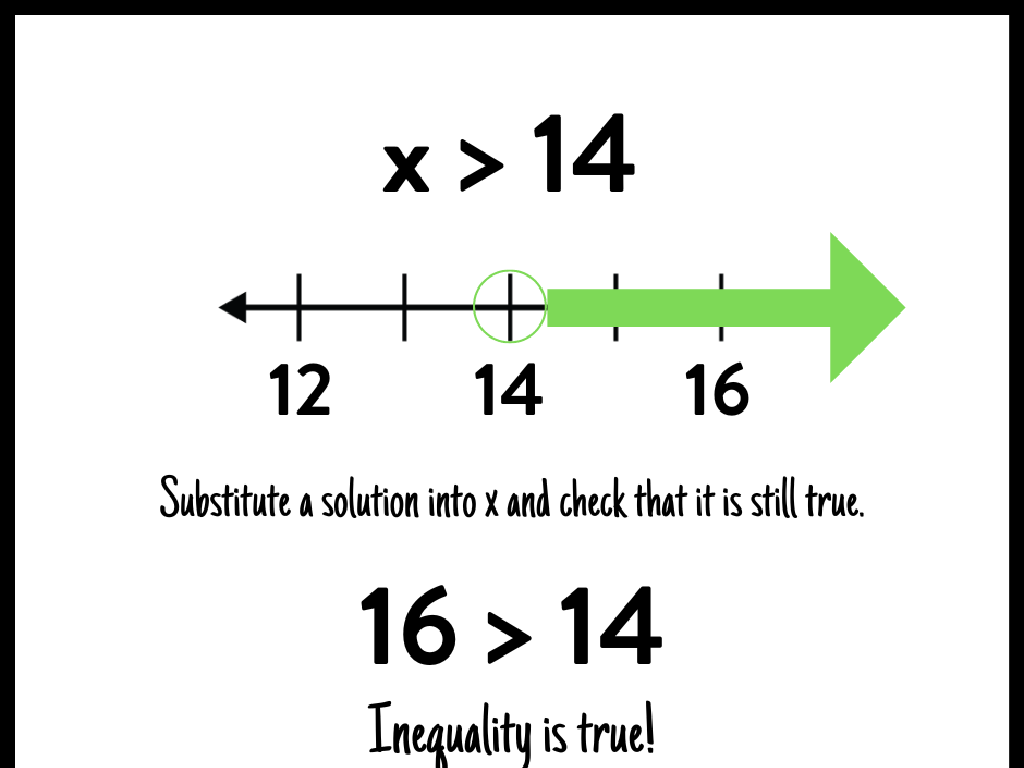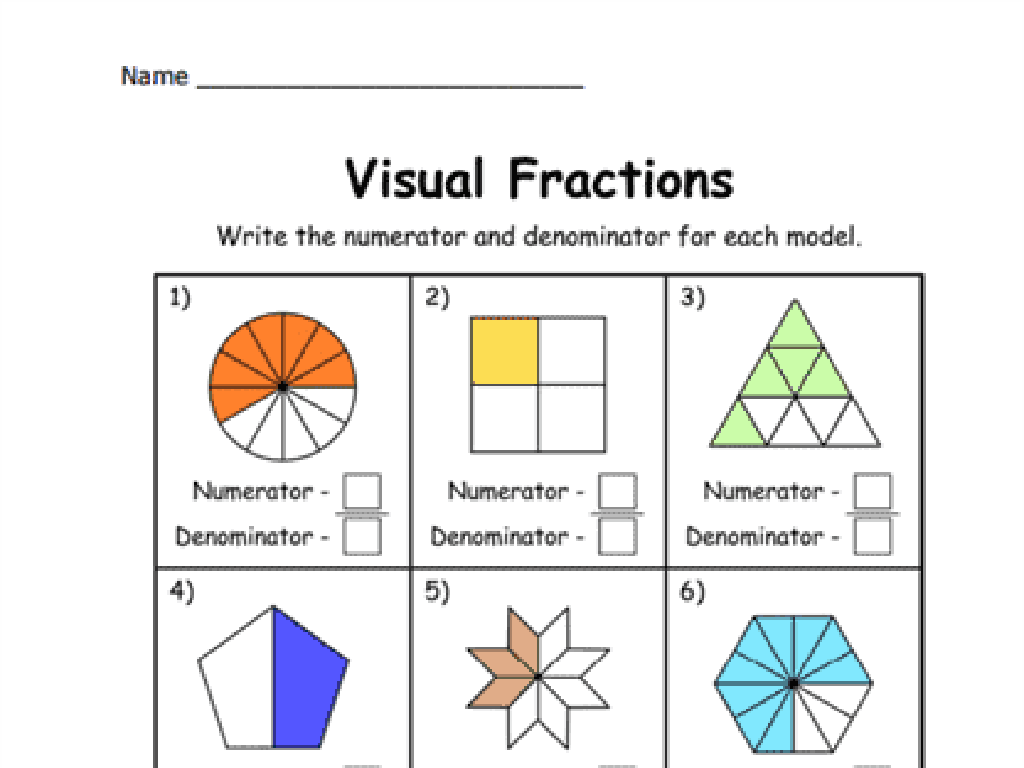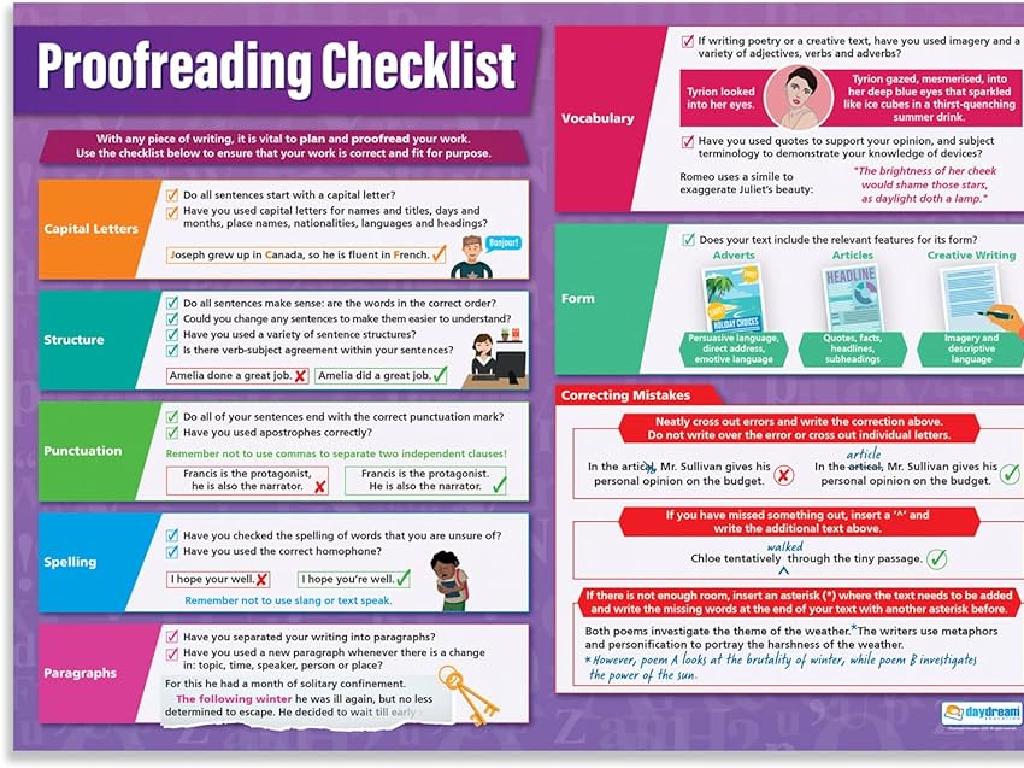Create Double Line Graphs
Subject: Math
Grade: Sixth grade
Topic: Data And Graphs
Please LOG IN to download the presentation. Access is available to registered users only.
View More Content
Double Line Graphs: Comparing Data
– What are double line graphs?
– Visual tools for comparing two related sets of data on one graph
– Comparing two data sets over time
– Observe trends and patterns between the two data sets
– Real-life double line graph uses
– Used in weather comparisons, stock market analysis, etc.
– Creating your own double line graph
– Gather data, plot points for each set, and draw lines to connect
|
Today’s lesson introduces double line graphs, which are essential for comparing two related sets of data over a period of time. Start by explaining the concept and structure of double line graphs. Emphasize their usefulness in visualizing and analyzing trends and relationships in various real-life scenarios, such as comparing temperatures across months or stock prices of two companies. Engage students by discussing examples and then guide them through the process of creating their own double line graphs using sample data. This will help them understand the practical application and develop skills in data interpretation.
Understanding Double Line Graphs
– Definition of a double line graph
– A visual tool showing two related data trends over time
– Two trends on one graph
– Each line shows how a different set of data changes
– Dual datasets representation
– Two lines allow comparison of different data sets in the same period
– Axes and variable significance
– X-axis typically shows time, Y-axis shows the variables we’re measuring
|
A double line graph is a powerful visual representation used to compare two sets of data over the same time period. It’s particularly useful in highlighting trends, patterns, or changes. For example, a double line graph could compare the average temperatures of two cities over a year, with time on the x-axis and temperature on the y-axis. Each city’s temperature trend is represented by a separate line, allowing for easy comparison. When teaching this concept, ensure students understand how to label each axis and plot points for two variables. Encourage them to think of scenarios where this type of graph would be useful, such as comparing sales of two products over time or contrasting the growth of two plants under different conditions.
Parts of a Double Line Graph
– Understanding X-axis and Y-axis
– X-axis is horizontal, Y-axis is vertical
– Plotting data points accurately
– Each set of data has its own points
– Connecting data points with lines
– Draw straight lines between points
– Using a key to distinguish lines
– A legend explains what each line represents
|
This slide introduces the essential components of a double line graph, which is a tool used to compare two sets of related data over a period of time. The X-axis typically represents the time intervals, while the Y-axis shows the quantity or measurement being compared. Students should learn how to accurately plot data points for each data set and then connect these points with lines to visualize trends. It’s crucial to use a key or legend to clearly indicate which line corresponds to which set of data. During the lesson, provide examples of double line graphs and guide students through the process of creating their own with sample data sets.
Creating Double Line Graphs
– Collect and organize data
– Gather data in pairs for comparison
– Draw and label axes
– X-axis for independent variable, Y-axis for dependent
– Plot data points for each set
– Use different symbols for each data set
– Connect points and add a key
– Lines show trends, key distinguishes sets
|
This slide outlines the steps to create a double line graph, which is a tool for comparing two sets of related data. Start by collecting data that can be paired for comparison, such as test scores over time for two different classes. Organize the data in a table to keep it clear. Next, draw the graph with labeled axes; the x-axis typically represents the independent variable while the y-axis represents the dependent variable. Plot the data points for each set on the graph using different symbols or colors for clarity. Finally, connect the points with lines to show trends over time and add a key to help interpret which line corresponds to which data set. Encourage students to choose scales that make the trends easy to see and interpret.
Double Line Graphs: Weather Data
– Compare monthly temperatures
– Use a line graph to show temperature changes over months
– Compare monthly rainfall
– Another line graph for rainfall each month
– Interpret trends and patterns
– Look for rising or falling trends in the data
– Relationship: Temperature vs. Rainfall
– Does more rain mean cooler temperatures?
|
This slide introduces students to the concept of double line graphs by using weather data as an example. Students will learn how to create two separate line graphs on the same axes: one for average monthly temperatures and another for monthly rainfall. They will then be guided on how to interpret the trends and patterns that emerge from the graphs, such as whether temperatures rise or fall over the year and how rainfall varies. Finally, students will discuss the potential relationship between temperature and rainfall, such as whether higher temperatures correlate with less rainfall. Encourage students to think critically about what factors might influence these patterns and to consider other examples where double line graphs could be useful.
Interpreting Double Line Graphs
– Identify peaks and troughs
– Peaks are the highest points, troughs are the lowest in the graph
– Compare two data sets
– Look for where lines cross or how far apart they are
– Make inferences from the graph
– Draw conclusions about data trends and relationships
– Understand graph implications
– Grasp what the data suggests about real-world situations
|
This slide aims to teach students how to interpret double line graphs effectively. Students should learn to identify the highest and lowest points on the graph, known as peaks and troughs, which can indicate critical data trends. They should also practice comparing two sets of data by observing the points where the lines intersect or the distance between them, which can reveal significant differences or similarities. Making inferences involves analyzing the graph to draw conclusions about the data’s behavior over time. Finally, students should understand the real-world implications of these graphs, such as changes in weather patterns or sales trends. Encourage students to practice with real data sets and to discuss their inferences with the class to enhance their analytical skills.
Class Activity: Create Your Own Double Line Graph!
– Collect data on two related topics
– Choose topics like hours of study vs. test scores
– Follow steps to create a double line graph
– Use a ruler for straight lines & label your axes
– Present and explain your graph to the class
– Share what your graph reveals about the topics
– Reflect on what your data shows
– Does the data have a pattern? What does it tell us?
|
This activity is designed to reinforce students’ understanding of double line graphs by applying their knowledge to real-world data. Students should select two related variables to track, such as study time versus test scores or daily temperature versus ice cream sales. They will use the steps discussed in class to create their graphs, ensuring accuracy by carefully plotting points and drawing straight lines. When presenting, students should explain the relationship between the two variables and what their graph shows. This exercise will help them practice speaking skills and interpreting data. As a teacher, prepare to guide them through the graph creation process, offer feedback on their presentations, and suggest improvements. Possible activities can include comparing weekdays vs. weekend activities, monitoring weather patterns, or tracking class performance on quizzes over time.
Conclusion & Homework: Double Line Graphs
– Review double line graph uses
– Homework: Analyze a news graph
Find an article with a double line graph.
– Summarize trends in the article
Write a summary of the data trends you see.
– Share findings next class
Be ready to discuss your summary.
|
As we wrap up, remember that double line graphs are powerful tools for comparing two sets of data over time. For homework, students should find a news article that includes a double line graph. They will write a summary of the trends shown in the graph, which will help them practice interpreting data and recognizing patterns. This exercise will also enhance their ability to understand real-world applications of double line graphs. In the next class, we’ll discuss their findings, allowing students to share their insights and learn from each other’s observations.





